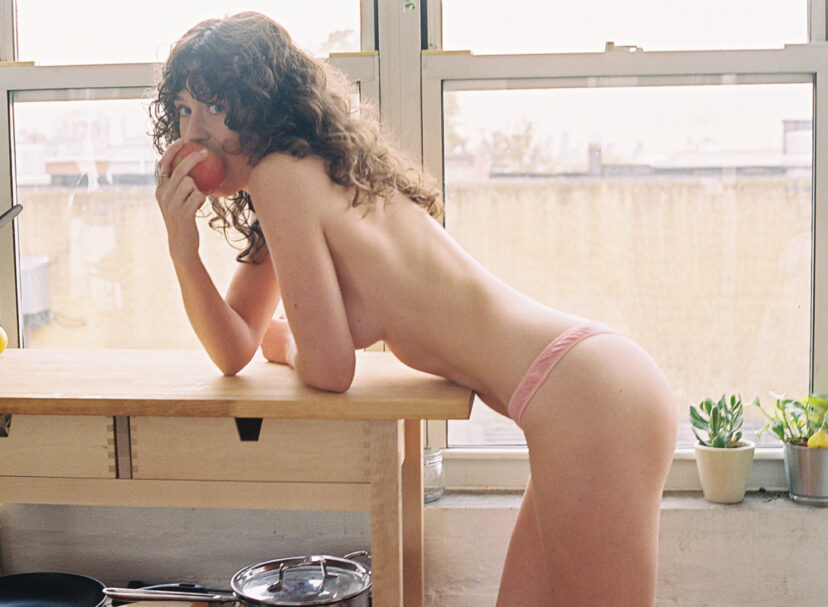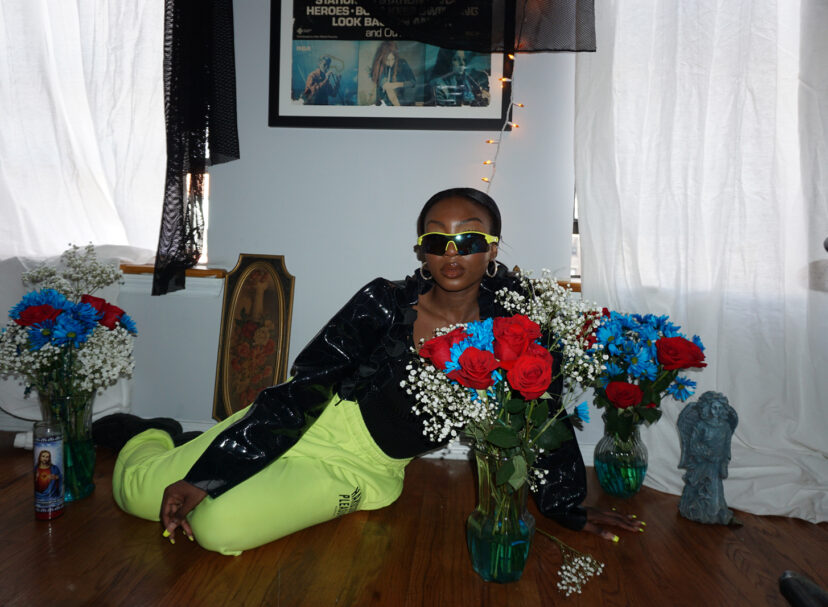Interview: Jillian Billard
Photo: Olimpia Dior
For visionary designer Nay Campbell, fashion is a catalyst for compassion, community, and acceptance. Known for drawing inspiration from New York City’s rich history––from Edie Sedgwick to the Harlem Renaissance––Campbell’s independently run label LORDELE is a revelatory explosion of textures, colors, feathers, and sequins. Following a lauded debut collection “Heartbreak and the Bowery,” Campbell’s second collection “Far From Here” celebrates New York City’s vibrant queer culture and posits radical self-expression and raw spirit as a form of resistance. In the midst of today’s tumultuous political climate where individuality is still steadfastly repressed, Campbell’s work offers a breath of fresh air. In light of the release of “Far From Here,” we spoke to Nay about nightlife; The Wizard of Oz; and dismantling oppressive normative structures.

Where are you from, and how did you come to fashion design?
I’m just an Italian girl from New Yowk. When I was in middle school I took design classes at FIT, and later I was accepted into their design program for college. Although University wasn’t quite for me, I did learn a lot. However, it wasn’t until I experienced the insanely filthy gorgeous world of NYC nightlife that everything felt right.
So you started studying fashion super early on! Do you have any specific memories of developing an interest in expression through style, or figures in your life who were inspirational to you in these formative years?
My grandmother, Cindy Lord, was once a young singer in the ‘50s, and eventually became a full on Chanel girl. She was very influenced by the brand, and taught me all about Chanel’s history, even Karl Lagerfeld’s reign. She actually ended up working for the company at the NYC Saks makeup counter back in the 80s. She was gifted this gorgeous couture dress by the company while she worked there. I don’t think she ever wore it, she just admired it very much. I used to dream about the world this dress represented. I still do.
Both your debut collection, “Heartbreak and the Bowery,” and your most recent collection, “Far From Here,” are so distinctly reminiscent of (what I think of as) New York’s Golden Age––drawing inspiration from Andy Warhol’s Factory; CBGB’s; and Studio 54. The city has changed so much over the decades, but your designs give me hope that this vivacious, gender-fluid, expressive youth culture is still out there. Can you talk a bit about some of your greatest style influences?
There are just so many. Discovering Edie Sedgwick was very important for me. Her story is as tragic as it is fascinating and beautiful. As one of the first It-girls and underground screen legends, Edie inspired and helped to cultivate a huge wave of culture. I think Ciao Manhattan is kind of her adaptation of The Wizard of Oz, but instead of going home as Dorothy did, Edie stayed in the poppy fields. Edie’s story wrote itself, she was the little lost girl.
Your collections also seem inextricably related to music, particularly in terms of an artist’s identity. Is music a major source of inspiration for you?
This season, I was thinking a lot about America’s first superstars and researching artists like Josephine Baker, Bessie Smith, Esther Jones, Billie Holiday, particularly their style and sound, their story, and how it affected the popular culture. These women produced some of America’s most important work in music, but at the time they were creating, they couldn’t even vote.
You’ve spoken in previous interviews about fostering inclusivity with your work. Could you talk a bit about the social climate you’ve experienced in New York in particular, and how fashion and art can serve as a catalyst for inclusivity?
Well it’s funny because even today, I think if you present yourself differently from traditional heteronormative standards, you are not regarded as valid, which is a very cheap easy trick to make someone feel less authentic.




I’m inspired by personality, and people who have their own style. I don’t believe in the pursuit of dressing to look like everyone else.


Can you talk a bit about the role of fashion, particularly in queer culture, and how your work subverts gender binaries?
I think queer culture has always influenced American fashion, but now because of social media it’s just become more transparent to the masses. From the Harlem Renaissance; to MLK; to Andy Warhol; it is the New York underground that has always been a part of shifting these inclusive ideals forward. I’m inspired by personality, and people who have their own style. I don’t believe in the pursuit of dressing to look like everyone else.
You mentioned earlier that it wasn’t until you found New York City nightlife that everything seemed to click. How does nightlife allow marginalized people to express their true selves?
Nightlife is a great place to experiment, with a lot of things, including your style. But unfortunately inclusivity can be limited to the underground and doesn’t always hold up past 4am. We all watched The Wizard of Oz as kids and dreamt about a world where we’d be celebrated for being different. I think it is that magic that is only found in the Bowery.
What’s next for you?
LORDELE Season 003––coming this September!




